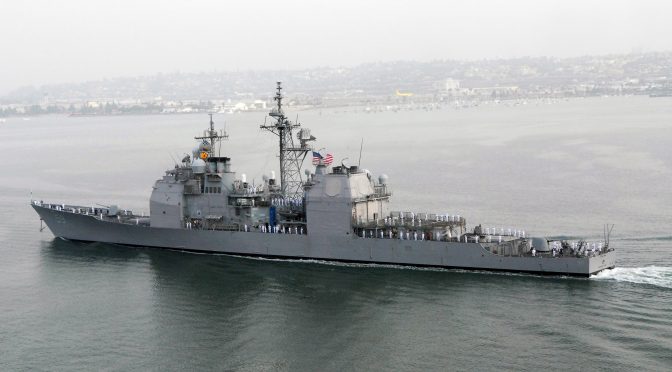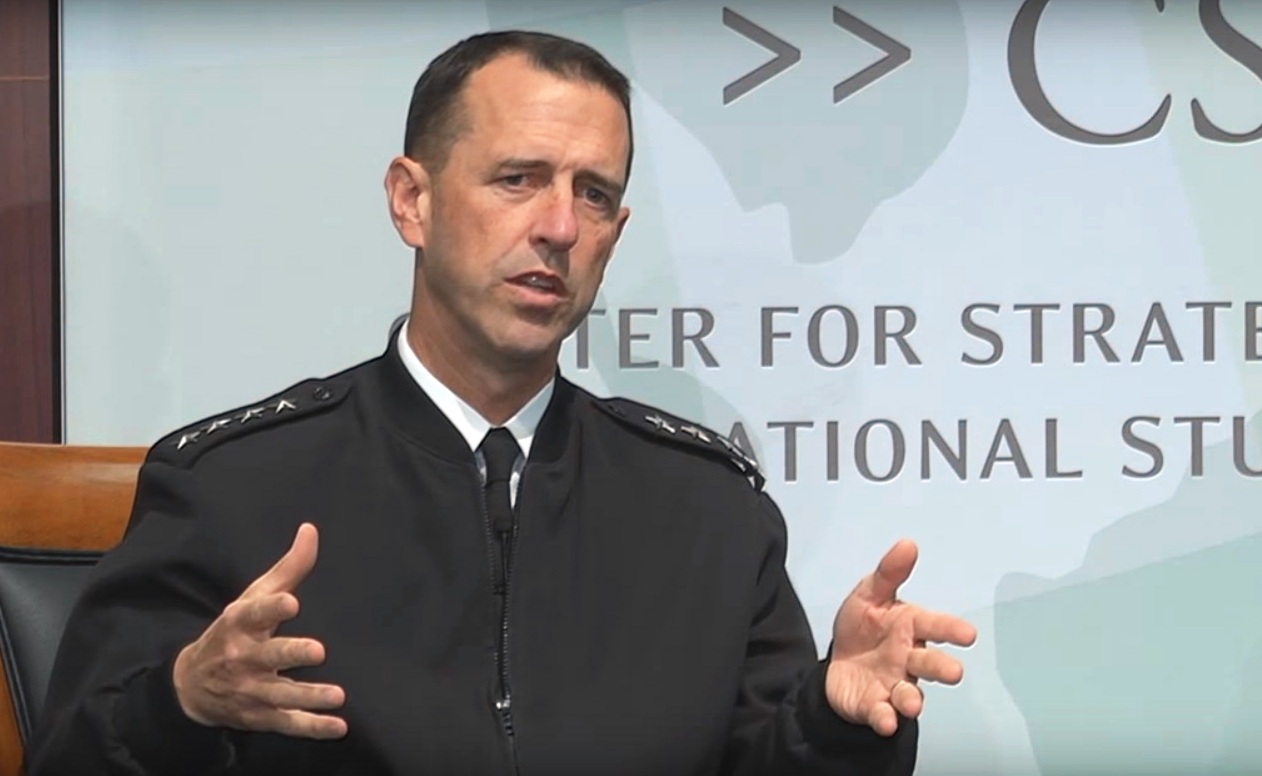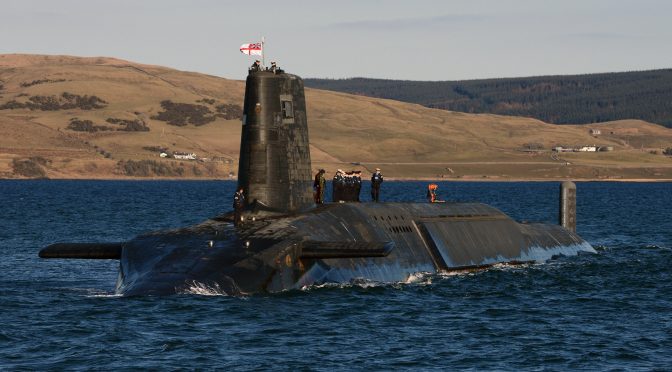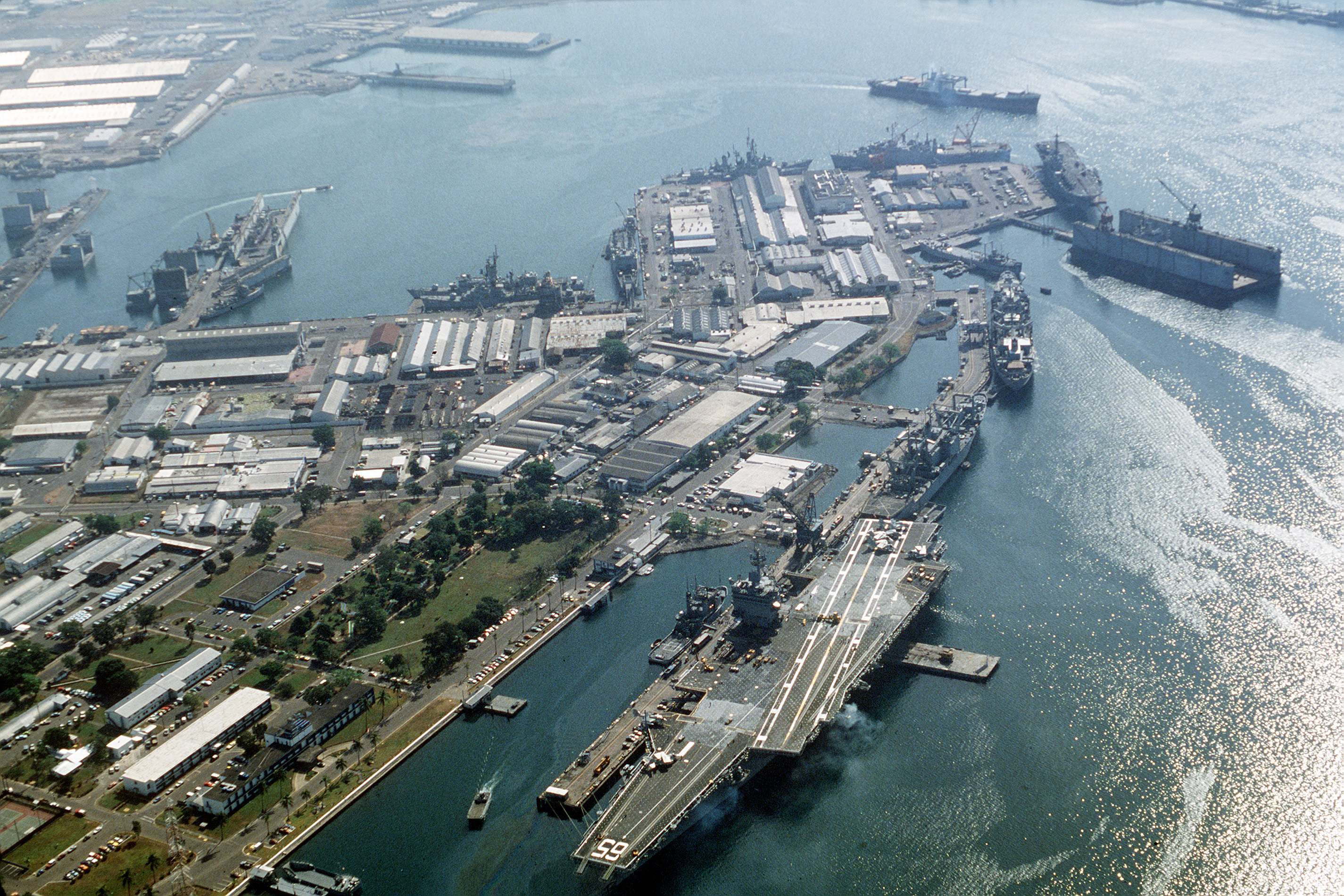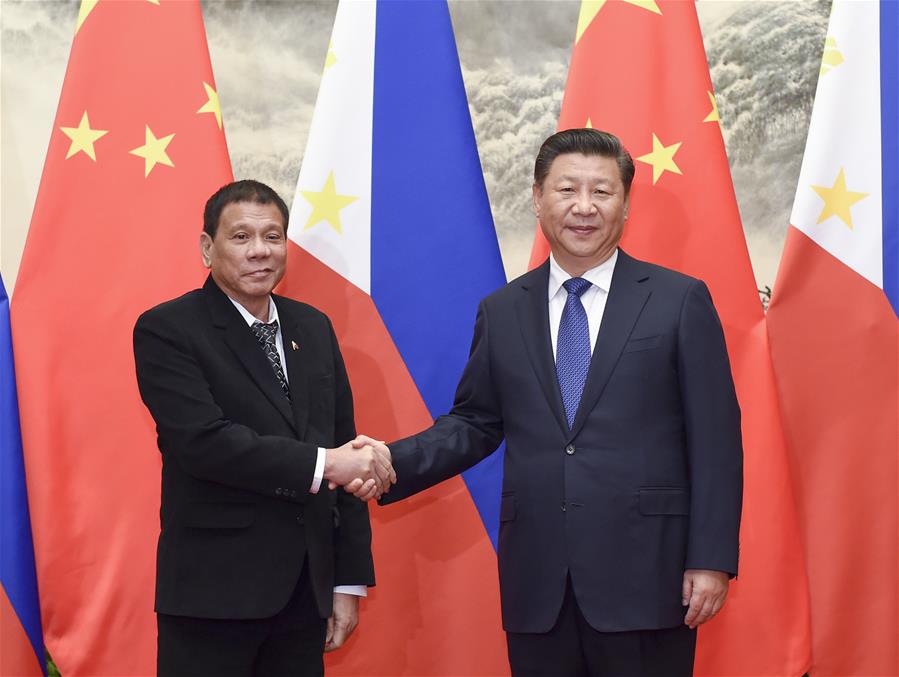The following article originally featured in National Defense University’s Joint Force Quarterly and is republished with permission. Read it in its original form here.
By Brent Sadler
It is change, continuing change, inevitable change, that is the dominant factor in society today. No sensible decision can be made any longer without taking into account not only the world as it is, but the world as it will be. . . . This, in turn, means that our statesmen, our businessmen, our everyman must take on a science fictional way of thinking.
—Isaac Asimov
Today, the Department of Defense (DOD) is coming to terms with trends forcing a rethinking of how it fights wars. One trend is proliferation of and parity by competitors in precision munitions. Most notable are China’s antiship ballistic missiles and the proliferation of cruise missiles, such as those the Islamic State of Iraq and the Levant claimed to use to attack an Egyptian ship off the Sinai in 2014. Another trend is the rapid technological advances in artificial intelligence (AI) and robotics that are enabling the creation of learning machines.
Failure to adapt and lead in this new reality risks U.S. ability to effectively respond and control the future battlefield. However, budget realities make it unlikely that today’s DOD could spend its way ahead of these challenges or field new systems fast enough. Consider that F-35 fighter development is 7 years behind schedule and, at $1.3 trillion, is $163 billion over budget.1 On the other hand, China produced and test-flew its first fifth-generation fighter (J-20) within 2 years. These pressures create urgency to find a cost-effective response through emergent and disruptive technologies that could ensure U.S. conventional deterrent advantage—in other words, the so-called Third Offset Strategy.
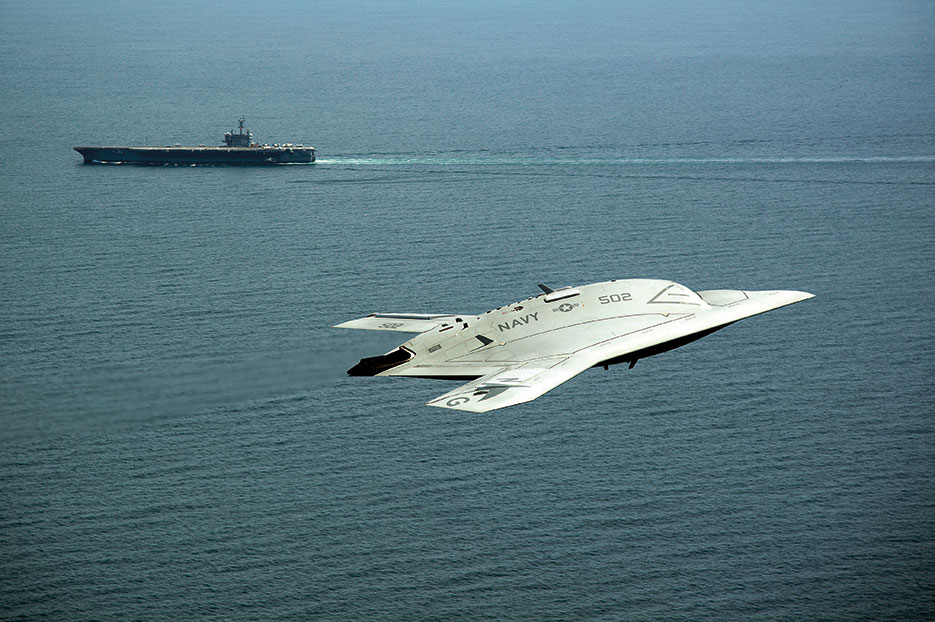
Narrowing Conventional Deterrence
In 1993, Andrew Marshall, Director of Net Assessment, stated, “I project a day when our adversaries will have guided munitions parity with us and it will change the game.”2 On December 14, 2015, Deputy Secretary of Defense Robert Work announced that day’s arrival when arguing for a Third Offset during comments at the Center for a New American Security.3
An offset seeks to leverage emerging and disruptive technologies in innovative ways in order to prevail in Great Power competition. A Great Power is understood to be a rational state seeking survival through regional hegemony with global offensive capabilities.4 The First Offset Strategy in the 1950s relied on tactical nuclear superiority to counter Soviet numerical conventional superiority. As the Soviets gained nuclear parity in the 1960s, a Second Offset in the 1970s centered on precision-guided munitions and stealth technologies to sustain technical overmatch, conventional deterrence, and containment for another quarter century. The Third Offset, like previous ones, seeks to deliberately change an unattractive Great Power competition, this time with China and Russia, to one more advantageous. This requires addressing the following challenges.
Fast Followers. Russia and China have been able to rapidly gain and sustain near-parity by stealing and copying others’ technologies for their own long-range precision capabilities, while largely pocketing developmental costs. Lateral thinking5 is required to confound these Fast Followers, as Apple used with Microsoft when it regained tech-sector leadership in the early 2000s.6
Hybrid Warfare. Russia’s actions in Crimea and ongoing activities in Eastern Ukraine indicate both that Russia is undeterred and that it was successful in coordinating asymmetric and unconventional tactics across multiple domains.
Narrowing Conventional Advantage. The loss of the precision-munitions advantage increases cost for U.S. intervention, thus reducing deterrence and inviting adventurism. Recent examples include Russian interventions (Georgia, Ukraine, Syria) and increasingly coercive Chinese activities in the East and South China seas, especially massive island-building in the South China Sea since 2014.
Persistent Global Risks from Violent Extremists. While not an existential threat, left unchecked, violent extremism is inimical to U.S. interests as it corrodes inclusive, open economies and societies. As a long-term ideological competition, a global presence able to monitor, attack, and attrite violent extremist networks is required.
In response to these challenges, two 2015 studies are informing DOD leadership on the need for a new offset: the Defense Science Board summer study on autonomy and the Long-Range Research and Development Planning Program. From these studies, Deputy Secretary Work has articulated five building blocks of a new offset:
- autonomous deep-learning systems
- human-machine collaboration
- assisted human operations
- advanced human-machine combat teaming
- network-enabled semi-autonomous weapons.
Central to all are learning machines that, when teamed with a person, provide a potential prompt jump in capability. Technological advantages alone, however, could prove chimerical as Russia and China are also investing in autonomous weapons, making any U.S. advantage gained a temporary one. In fact, Russia’s Chief of the General Staff, General Valery Gerasimov, predicts a future battlefield populated with learning machines.7
A Third Offset Strategy could achieve a qualitative edge and ensure conventional deterrence relative to Fast Followers in four ways: One, it could provide U.S. leaders more options along the escalation ladder. Two, a Third Offset could flip the cost advantage to defenders in a ballistic and cruise missile exchange; in East Asia this would make continuation of China’s decades-long investment in these weapons cost prohibitive. Three, it could have a multiplicative effect on presence, sensing, and combat effectiveness of each manned platform. Four, such a strategy could nullify the advantages afforded by geographic proximity and being the first to attack.
Robot Renaissance
In 1997, IBM’s Deep Blue beat chess champion Garry Kasparov, marking an inflection point in the development of learning machines. Since then, development of learning machines has accelerated, as illustrated by Giraffe, which taught itself how to play chess at a master’s level in 72 hours.8 Driving this rapid development have been accelerating computer-processing speeds and miniaturization. In 2011, at the size of 10 refrigerators, the super-computer Watson beat two champions of the game show Jeopardy. Within 3 years, Watson was shrunk to the size of three stacked pizza boxes—a 90-percent reduction in size along with a 2,700-percent improvement in processing speed.9 Within a decade, computers likely will match the massive parallel processing capacity of the human brain, and these machines will increasingly augment and expand human memory and thinking much like cloud computing for computers today, leading to accelerating returns in anything that can be digitized.10 This teaming of man and machine will set the stage for a new renaissance of human consciousness as augmented by learning machines—a Robot Renaissance.11 But man is not destined for extinction and will remain part of the equation; as “freestyle chess” demonstrates, man paired with computers utilizing superior processes can prevail over any competitor.12
Augmenting human consciousness with learning machines will usher in an explosion in creativity, engineering innovation, and societal change. This will in turn greatly impact the way we conceptualize and conduct warfare, just as the Renaissance spurred mathematical solutions to ballistic trajectories, metallurgy, and engineering for mobile cannons. Such a future is already being embraced. For example, Bank of America and Merrill Lynch recently concluded that robotics and AI—learning machines—will define the next industrial revolution and that the adoption of this technology is a foregone conclusion. Their report concludes that by 2025 learning machines will be performing 45 percent of all manufacturing versus 10 percent today.13 It would be a future of profound change and peril and was the focus of the 2016 Davos Summit whose founder, Klaus Schwab, calls the period the Fourth Industrial Revolution.14 As the Industrial Revolution demonstrated, the advantage will be to the early adopter, leaving the United States little choice but to pursue an offset strategy that leverages learning machines.

Advantages of Man-Machine Teaming
Learning machines teamed with manned platforms enabled by concepts of operations will be a key element of the Third Offset Strategy. Advantages of this approach include:
- Speed Faster than Adversaries. Staying inside an adversary’s OODA (observe, orient, decide, act) loop necessitates learning machines that are able to engage targets at increasing speed, which diminishes direct human control.15
- Greater Combat Effect per Person. As extensions of manned platforms, teaming increases the combat effect per person through swarm tactics as well as big data management. Moreover, augmenting the manned force with autonomous systems could mitigate deployment costs, which have increased 31 percent since 2000 and are likely unsustainable under current constructs.16
- Less Human Risk. Reduced risk to manned platforms provides more options along the escalation ladder to commanders and allows a more forward and pervasive presence. Moreover, autonomous systems deployed in large numbers will have the long-term effect of mitigating relative troop strengths.
- High-Precision, Emotionless Warfare. Learning machines provide an opportunity for battlefield civility by lessening death and destruction with improved precision and accuracy. Moreover, being non-ethical and unemotional, they are not susceptible to revenge killings and atrocities.
- Hard to Target. Learning machines enable disaggregated combat networks to be both more difficult to target and more fluid in attack. Some capabilities (for example, cyber) could reside during all phases of a conflict well within a competitor’s physical borders, collecting intelligence while also ready to act like a “zero-day bomb.”17
- Faster Acquisition and Improvement. Incorporation of learning machines in design, production, and instantaneous sharing of learning across machines would have a multiplicative effect. However, achieving such benefits requires overcoming proprietary constraints such as those encountered with the Scan Eagle unmanned vehicle if better intra-DOD innovation and interoperability are to be achieved.
Realizing these potential benefits requires institutional change in acquisition and a dedicated cadre of roboticists. However, pursuing a Third Offset Strategy is not without risks.
Third Offset Risks
Fielding learning machines presents several risks, and several technical and institutional barriers. The risks include the following challenges.
Cyber Intrusion and Programming Brittleness. DOD relies on commercial industry to develop and provide it with critical capabilities. This situation provides some cost savings, while presenting an Achilles’ heel for cyber exploitation during fabrication and in the field. One avenue for attack is through the complexity of programming, which leads to programming brittleness, or seams and back rooms causing system vulnerabilities.18 Another is through communications vital to proper human control. Additionally, swarm tactics involving teams of machines networking independently of human control on a near-continuous basis could further expose them to attack and manipulation.19 Mitigating such threats and staying inside an adversary’s accelerating OODA loop would drive increasing autonomy and decreasing reliance on communications.20
Proliferation and Intellectual Insecurity. The risk of proliferation and Fast Followers to close technological advantage makes protecting the most sensitive elements of learning machines an imperative. Doing so requires addressing industrial espionage and cyber vulnerabilities in the commercial defense industry, which will require concerted congressional and DOD action.
Unlawful Use. As competitors develop learning machines, they may be less constrained and ethical in their employment. Nonetheless, the international Law of Armed Conflict applies, and does not preclude employing learning machines on the battlefield in accordance with jus in bello—the legal conduct of war. Legally, learning machines would have to pass the same tests as any other weapons; their use must be necessary, discriminate, and proportional against a military objective.21 A key test for learning machines is discrimination; that is, the ability to discern noncombatants from targeted combatants while limiting collateral damage.22
Unethical War. When fielded in significant numbers, learning machines could challenge traditions of jus ad bellum—criteria regarding decisions to engage in war. That is, by significantly reducing the cost in human life to wage war, the decision to wage it becomes less restrictive. Such a future is debatable, but as General Paul J. Selva (Vice Chairman of the Joint Chiefs of Staff) suggested at the Brookings Institution on January 21, 2016, there should be an international debate on the role of autonomous weapons systems and jus ad bellum implications.
A New Fog of War. Lastly, the advent of learning machines will give rise to a new fog of war emerging from uncertainty in a learning machine’s AI programming. It is a little unsettling that a branch of AI popular in the late 1980s and early 1990s was called “fuzzy logic,” due to an ability to alter its programming that represents a potential loss of control and weakening of liability.

Third Offset Barriers
Overcoming the barriers to a Third Offset Strategy requires advancing key foundational technologies, adjustments in acquisition, and training for man–learning machine interaction.
Man-Machine Interaction. Ensuring proper human interface with and the proper setting of parameters for a given mission employing learning machines requires a professional cadre of roboticists. As with human communication, failure to appropriately command and control learning machines could be disastrous. This potential was illustrated in the movie 2001: A Space Odyssesy when the HAL 9000 computer resolved a dilemma of conflicting orders by killing its human crew. Ensuring an adequately trained cadre is in place as new systems come online requires building the institutional bedrock on which these specialists are trained. Because it will take several years to build such a cadre, it is perhaps the most pressing Third Offset investment.
Trinity of Robotic Capability. Gaining a sustainable and significant conventional advantage through learning machines requires advances in three key areas. This trinity includes high-density energy sources, sensors, and massive parallel processing capacity. Several promising systems have failed because of weakness in one or all of these core capabilities. Fire Scout, a Navy autonomous helicopter, failed largely due to limited endurance. The Army and Marine Corps Big Dog was terminated because its noisy gasoline engine gave troop positions away. Sensor limitations undid Boomerang, a counter-sniper robot with limited ability to discern hostiles in complex urban settings.23
Agile Acquisition Enterprise. As technological challenges are overcome, any advantage earned would be transitory unless acquisition processes adapt in several key ways. One way is to implement continuous testing and evaluation to monitor the evolving programming of learning machines and ensure the rapid dissemination of learning across the machine fleet. A second way is to broaden the number of promising new capabilities tested while more quickly determining which ones move to prototype. A third way is to more rapidly move prototypes into the field. Such changes would be essential to stay ahead of Fast Followers.
While acquisition reforms are being debated in Congress, fielding emerging and disruptive technologies would need to progress regardless.24 However, doing both provides a game-changing technological leap at a pace that can break today’s closely run technological race—a prompt jump in capability.
Chasing a Capability Prompt Jump
Actualizing a nascent Third Offset Strategy in a large organization such as DOD requires unity of effort. One approach would be to establish a central office empowered to ensure coherency in guidance and oversight of resource decisions so that investments remain complementary. Such an office would build on the legacy of the Air Sea Battle Office, Joint Staff’s Joint Concept for Access and Maneuver in the Global Commons, and Strategic Capabilities Office (SCO). Therefore, a central office would need to be resourced and given authority to direct acquisition related to the Third Offset, develop doctrine, standardize training, and conduct exercises to refine concepts of operation. First steps could include:
- Limit or curtail proprietary use in Third Offset systems while standardizing protocols and systems for maximum cross-Service interoperability.
- Leverage legacy systems initially by filling existing capacity gaps. SCO work has been notable in pursuing rapid development and integration of advanced low-cost capabilities into legacy systems. This approach results in extension of legacy systems lethality while complicating competitors’ countermeasures. Examples include shooting hypersonic rounds from legacy Army artillery and the use of digital cameras to improve accuracy of small-diameter bombs.25 The Navy could do this by leveraging existing fleet test and evaluation efforts, such as those by Seventh Fleet, and expanding collaboration with SCO. An early effort could be maturing Unmanned Carrier-Launched Airborne Surveillance and Strike, which is currently being developed for aerial refueling, into the full spectrum of operations.26
- Standardize training and concepts of operations for learning machines and their teaming with manned platforms. Early efforts should include formally establishing a new subspecialty of roboticist and joint exercises dedicated to developing operational concepts of man-machine teaming. Promising work is being done at the Naval Postgraduate School, which in the summer of 2015 demonstrated the ability to swarm up to 50 unmanned systems at its Advanced Robotic Systems Engineering Laboratory and should inform future efforts.
- Direct expanded investment in the trinity of capabilities—high-density energy sources, sensors, and next-generation processors. The DOD Defense Innovation Initiative is building mechanisms to identify those in industry advancing key technologies, and will need to be sustained as private industry is more deeply engaged.
DOD is already moving ahead on a Third Offset Strategy, and it is not breaking the bank. The budget proposal for fiscal year 2017 seeks a significant but manageable $18 billion toward the Third Offset, with $3 billion devoted to man-machine teaming, over the next 5 years; the $3.6 billion committed in 2017 equates to less than 1 percent of the annual $582.7 billion defense budget.27 As a first step, this funds initial analytical efforts in wargaming and modeling and begins modest investments in promising new technologies.
Because continued U.S. advantage in conventional deterrence is at stake, resources and senior leader involvement must grow to ensure the success of a Third Offset Strategy. It will be critical to develop operational learning machines, associated concepts of operations for their teaming with people, adjustments in the industrial base to allow for more secure and rapid procurement of advanced autonomous systems, and lastly, investment in the trinity of advanced base capabilities—sensors, processors, and energy.
For the Navy and Marine Corps, the foundation for such an endeavor resides in the future design section of A Cooperative Strategy for 21st Century Seapower supported by the four lines of effort in the current Chief of Naval Operations’ Design for Maintaining Maritime Superiority. A promising development has been the establishment of OpNav N99, the unmanned warfare systems directorate recently established by the Office of the Chief of Naval Operations on the Navy staff and the naming of a Deputy Assistant Secretary of Navy for Unmanned Systems, both dedicated to developing capabilities key to a Third Offset Strategy. This should be broadened to include similar efforts in all the Services.
However, pursuit of game-changing technologies is only sustainable by breaking out of the increasingly exponential pace of technological competition with Fast Followers. A Third Offset Strategy could do this and could provide the first to adopt outsized advantages. Realistically, to achieve this requires integrating increasing layers of autonomy into legacy force structure as budgets align to new requirements and personnel adapt to increasing degrees of learning machine teaming. The additive effect of increasing autonomy could fundamentally change warfare and provide significant advantage to whoever successfully teams learning machines with manned systems. This is not a race we are necessarily predestined to win, but it is a race that has already begun with strategic implications for the United States. JFQ
Captain Brent D. Sadler, USN, is a Special Assistant to the Navy Asia-Pacific Advisory Group.
Notes
1 CBS News, 60 Minutes, “The F-35,” February 16, 2014.
2 Deputy Secretary of Defense Bob Work, speech delivered to a Center for a New American Security Defense Forum, Washington, DC, December 14, 2015, available at <www.defense.gov/News/Speeches/Speech-View/Article/634214/cnas-defense-forum>.
3 Ibid.
4 John J. Mearsheimer, The Tragedy of Great Power Politics (New York: Norton, 2014).
5 Lateral thinking, a term coined by Edward de Bono in 1967, means indirect and creative approaches using reasoning not immediately obvious and involving ideas not obtainable by traditional step-by-step logic.
6 Shane Snow, Smartcuts: How Hackers, Innovators, and Icons Accelerate Success (New York: HarperCollins, 2014), 6, 116.
7 Russia’s Chief of the General Staff, General Valery Gerasimov, stated in a February 27, 2013, article: “Another factor influencing the essence of modern means of armed conflict is the use of modern automated complexes of military equipment and research in the area of artificial intelligence. While today we have flying drones, tomorrow’s battlefields will be filled with walking, crawling, jumping, and flying robots. In the near future it is possible a fully robotized unit will be created, capable of independently conducting military operations.” See Mark Galeotti, “The ‘Gerasimov Doctrine’ and Russian Non-Linear War,” In Moscow’s Shadows blog, available at <https://inmoscowsshadows.wordpress.com/2014/07/06/the-gerasimov-doctrine-and-russian-non-linear-war/>. For Gerasimov’s original article (in Russian), see Military-Industrial Kurier 8, no. 476 (February 27–March 5, 2013), available at <http://vpk-news.ru/sites/default/files/pdf/VPK_08_476.pdf>.
8 “Deep Learning Machine Teaches Itself Chess in 72 Hours, Plays at International Master Level,” MIT Technology Review, September 14, 2015, available at <www.technologyreview.com/view/541276/deep-learning-machine-teaches-itself-chess-in-72-hours-plays-at-international-master/>.
9 “IBM Watson Group Unveils Cloud-Delivered Watson Services to Transform Industrial R&D, Visualize Big Data Insights and Fuel Analytics Exploration,” IBM News, January 9, 2014, available at <http://ibm.mediaroom.com/index.php?s=43&item=1887>.
10 Ray Kurzweil, How to Create a Mind: The Secret of Human Thought Revealed (New York: Penguin Books, 2012), 4, 8, 125, 255, 280–281.
11 A learning machine, according to Arthur Samuel’s 1959 definition of machine learning, is the ability of computers to learn without being explicitly programmed.
12 Erik Brynjolfsson and Andrew McAfee, The Second Machine Age: Work, Progress, and Prosperity in a Time of Brilliant Technologies (New York: W.W. Norton, 2014), 188.
13 Michael Hartnett et al., Creative Disruption (New York: Bank of America and Merrill Lynch, April 2015), available at <www.bofaml.com/content/dam/boamlimages/documents/articles/D3_006/11511357.pdf>.
14 Klaus Schwab, The Fourth Industrial Revolution (Geneva: World Economic Forum, 2016).
15 Michael N. Schmitt, “War, Technology and the Law of Armed Conflict,” International Law Studies, vol. 82 (2006), 137–182.
16 Growth in DOD’s Budget from 2000 to 2014 (Washington, DC: Congressional Budget Office, November 2014).
17 Richard Clarke, Cyber War: The Next Threat to National Security and What to Do About It (New York: HarperCollins, 2010), 163–166.
18 Ibid., 81–83.
19 Katherine D. Mullens et al., An Automated UAV Mission System (San Diego, CA: SPAWAR Systems Center, September 2003), available at <www.dtic.mil/cgi-bin/GetTRDoc?AD=ADA422026>.
20 Armin Krishnan, Killer Robots: Legality and Ethicality of Autonomous Weapons (Farnham, United Kingdom: Ashgate, 2009).
21 James E. Baker, In the Common Defense: National Security Law for Perilous Times (Cambridge: Cambridge University Press, 2007), 215–216.
22 “Protocol Additional to the Geneva Conventions of 12 August 1949, and relating to the Protection of Victims of International Armed Conflicts (Protocol I), 8 June 1977,” Article 48, 57.4 and 51.4; Yoram Dinstein, The Conduct of Hostilities under the Law of International Armed Conflict, 2nd ed. (New York: Cambridge University Press, 2010), 62–63.
23 Schmitt.
24 House Armed Services Committee, Acquisition Reform: Experimentation and Agility, Hon. Sean J. Stackley, Assistant Secretary of the Navy for Research, Development, and Acquisition, 114th Cong., January 7, 2016, available at <http://docs.house.gov/meetings/AS/AS00/20160107/104314/HHRG-114-AS00-Wstate-StackleyS-20160107.pdf>.
25 Sam LaGrone, “Little Known Pentagon Office Key to U.S. Military Competition with China, Russia,” U.S. Naval Institute News, February 2, 2016.
26 Christopher P. Cavas, “U.S. Navy’s Unmanned Jet Could Be a Tanker,” Defense News, February 1, 2016, available at <www.defensenews.com/story/defense/naval/naval-aviation/2016/01/31/uclass-ucasd-navy-carrier-unmanned-jet-x47-northrop-boeing/79624226/>.
27 Aaron Mehta, “Defense Department Budget: $18B Over FYDP for Third Offset,” Defense News, February 9, 2016, available at <www.defensenews.com/story/defense/policy-budget/budget/2016/02/09/third-offset-fy17-budget-pentagon-budget/80072048/>.
Featured Image: Boston Dynamics’ Atlas robot. (Boston Dynamics)



